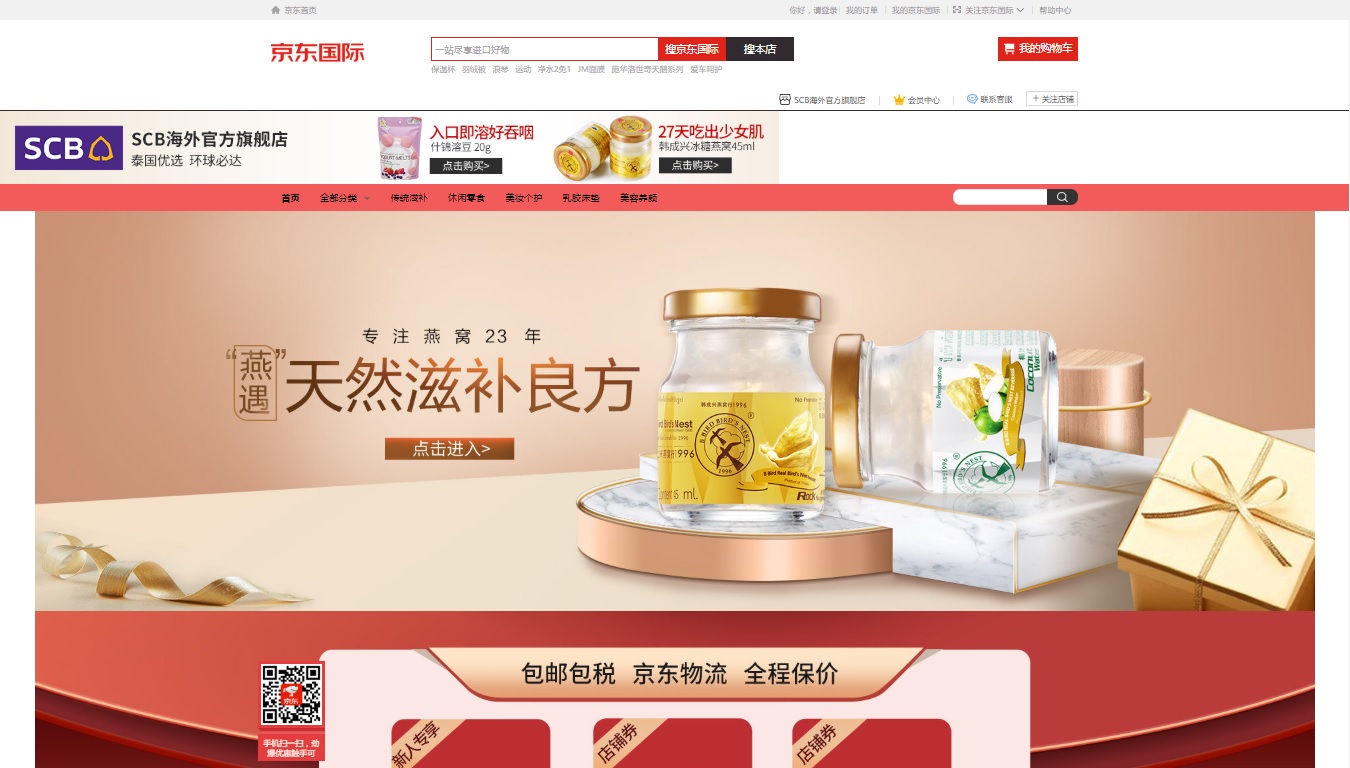I WANT
RELATED LINKS
I WANT
RELATED LINKS
RELATES LINKS
I WANT
RELATES LINKS
Services
Related Links
Use and Management of Cookies
We use cookies and other similar technologies on our website to enhance your browsing experience. For more information, please visit our Cookies Notice.
- Personal Banking
- Stories & Tips
- Success Story
- 8 Checklists Before Thai SME Entering the Chinese Market
- Personal Banking
- ...
- 8 Checklists Before Thai SME Entering the Chinese Market
8 Checklists Before Thai SME Entering the Chinese Market
12-06-2023
Penetrating the Chinese market is not easy but not too hard for entrepreneurs who make a strong attempt. Khun Banphot Hanthongkam or Khun Bird from BB Birdnest Trading Co., Ltd. who is successful in launching bird nest products in China, shared his experience in penetrating the Chinese market and provided a checklist to SME entrepreneurs to get ready for extending their business.
BB Birdnest is the family business that Khun Bird has inherited from his mother for 8 years. Many years ago, his parents marketed bird nests in China through agent as they couldn’t speak Chinese and the price was undersold because the product didn’t carry a brand name. Fortunately, Khun Bird used to study in Beijing for 8 months after graduating. He went to China to explore the market and spent a year in Guangzhou. He went back to Thailand as he failed to launch a bird nest over there. After being back for 7 years ago, Thai cosmetic brands were quite popular among the Chinese. Khun Bird applied for a distributor of a cosmetic brand and launch its product to Chinese who lived in Thailand, and he also launched bird nest alongside. That was the beginning of creating his bird nest brand for the Chinese.

At present, BB Birdnest Trading is successfully marketing its products in China. The business runs through a Chinese team that is responsible for local sales and online marketing platforms, to diversify the market and not to depend on the country market solely. For online, BB Birdnest launched Flagship Store on Tmall in the mid of 2019 and sold products through SCB Flagship Store on JD.com. Over 3 years ago, Khun Bird owned a Flagship Store on JD.com but his operating team wasn’t big enough to handle two platforms. That’s why he later joined hands with SCB and the business is managed by SCB China. Khun Bird said that “SCB Flagship Store has high potential and has helped me a lot”.
Khun Bird is certain that the COVID crisis has created a good opportunity for marketing products in China, especially online as Chinese who used to stay in Thailand and used his products can’t travel and find somebody to buy products for them. If they need any product, they’ll search it online. However, it will be challenging for marketing a new product as you need to start things from the beginning again and test your products with a Chinese group in Thailand. When everything is well settled, you can market your products through Cross-Border E-Commerce (CBEC). Cross-Border e-Commerce (CBEC)

Checklist before entering the Chinese market
1) Find the right product: Before launching, consider if the product suits the market type. Don’t educate consumers much if your product is widely known. Khun Bird mentioned launching bird nests in Europe and the U.S. Even though their market size is large but his product doesn’t fit most consumers so it’s hard to be successful.
2) Market trial : To test if your product can be launched in China, try it with Chinese in Thailand. Do that with your Chinese friend if you have one as it’s the cheapest way. If your product works well and you want to make a trial launch in China market, go to CBEC because the cost is lower than marketing your products at the booth exhibition. After being successful with CBEC, the next step is to prepare for mass marketing through Normal Trade. Khun Bird is looking forward to opening physical stores in China to build trust to Chinese that his online Flagship Store has a real physical presence.Cross Border e-Commerce (CBEC)
3) Study Chinese behavior: When Khun Bird was in Guangzhou, he closely studied Chinese behavior, culture, lifestyle, and preference. For example, he knows their favorite color and packaging so he can make better improvements to match people’s tastes.
4) Trademark registration for packaging design and protective sticker: This is the most significant matter. When the product was well-known while we’re marketing it in China, it turned out that it was not our brand because somebody has already registered our brand in China. As a result, we had to rent the copyright of our own brand before selling our product in China. Packaging design is also essential. If we don’t register it, our packaging may be taken for use and people just change our logo. A protective sticker is also a must. You should place stickers on your products from the first day of manufacturing. When you do it later, the Chinese will confuse and misunderstand that the product is different. For expensive products, use an RFID tag so customers can scan them and know that your product is original.
5) Create your own brand: Khun Bird realized that he failed in Guangzhou because his brand was not well-known for Chinese at that time. Nobody will have an interest in an unpopular brand. Therefore, you need to create your brand until it’s popular among the Chinese before entering the Chinese market.
6) Launch small packaging at first: From his experience, Khun Bird suggested that when the Chinese want to buy a new item, they won’t buy much with high value. The product should be produced in small packaging an affordable price so people can easily make a purchasing decision
7) Manage cost: Try to achieve Economies of Scale by managing cost not lower than the normal cost in Thailand because production cost in Thailand is actually higher than in China. If production cost is higher than in Thailand, your product can’t compete with others in the market.
8) Know the Chinese language: Khun Bird believes that entrepreneurs who can speak Chinese have more advantage in business negotiation than those who can’t. The competition between Chinese is tremendously high so foreigners who can’t speak Chinese will be unfavorable.
Entrepreneurs who are interested in entering the Chinese market and need information about product marketing on SCB Overseas Flagship Store, please contact China Business Development at [email protected] โทร. 02-5444960 WeChat SCB_Thailand. See more details at SCB Flagship Store on JD International and Tmall GlobalJD International และ TMall Global
Source: Expanding your Brands to China Market through Cross-border eCommerce lecture on 29 October 2020.
